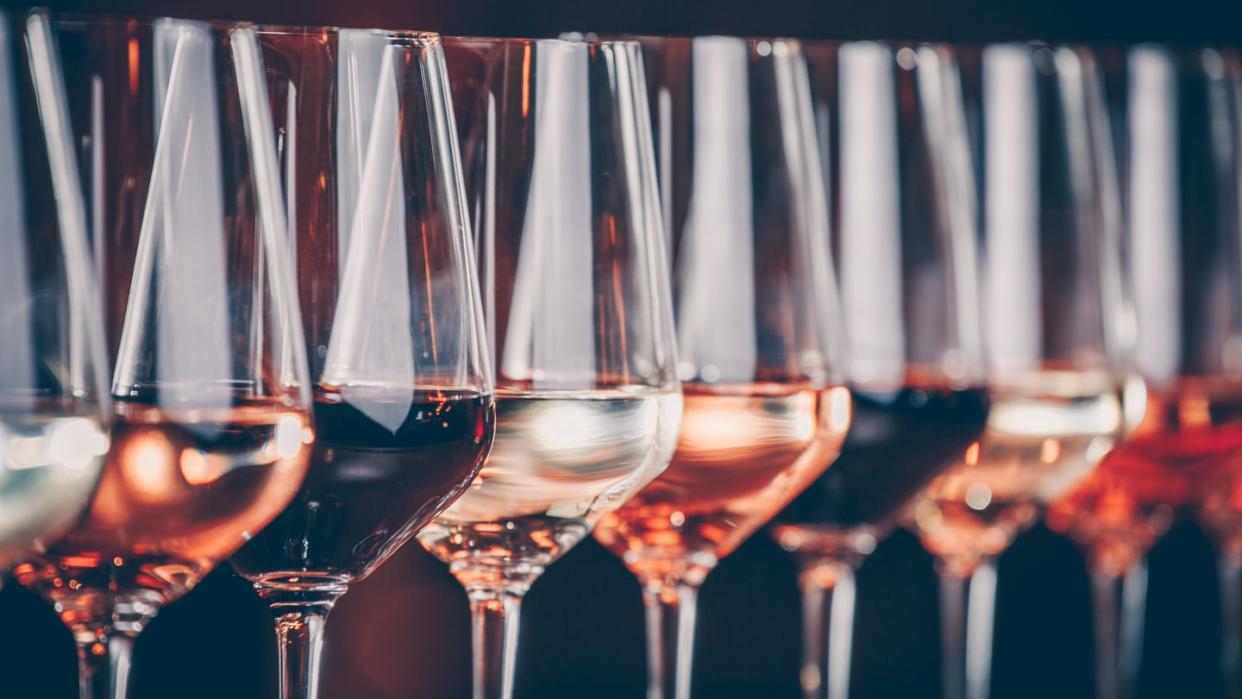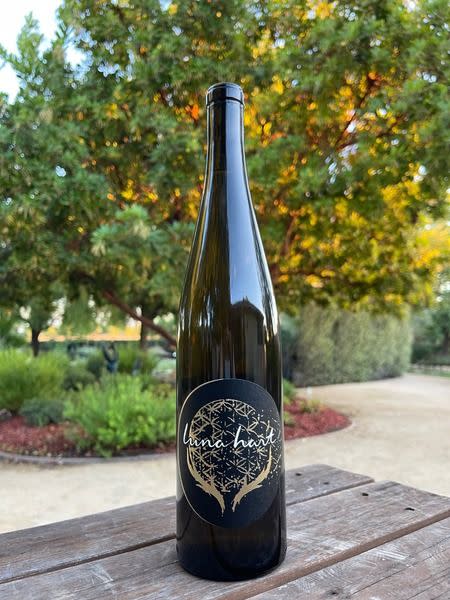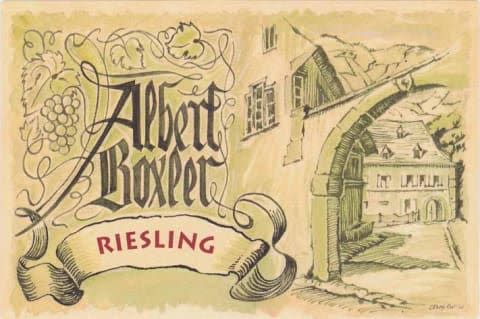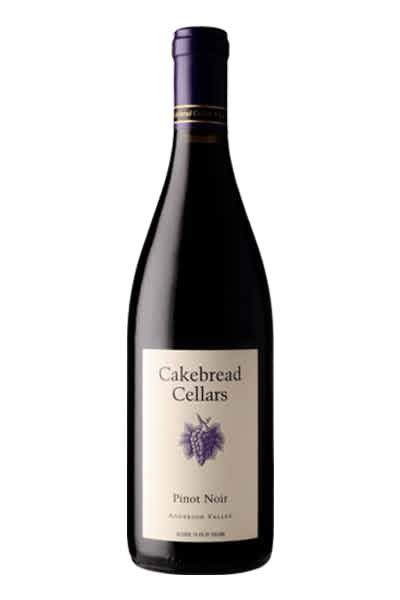The 6 Best Wines for Beginners, According to Sommeliers

"Hearst Magazines and Yahoo may earn commission or revenue on some items through these links."
Sure, you could book a trip to Napa, Italy or one of the top sustainable wineries in the world to study all things wine. But if you’re just getting familiar with the process behind winemaking, flavors and aromas that are typical for specific grapes, the language related to wine and how to order it like a pro, it can feel overwhelming and intimidating to know where to start—or where to travel to discover wines that will align with your palate. This is especially true if you’re coming from a background of sipping on cocktails or beer, or tend to stick to just one grape as your “safe” option.
If you’ve seen the intense documentary Somm or have ever felt judged for ordering a certain bottle or drinking red wine during summer, the concept of taking your wine knowledge to the next level can feel intimidating or exclusive. But the best part about wine 101 is that there’s no tough love or tests required. The most important thing to keep in mind is that this is supposed to spark joy, adds Elyse Lovenworth, a Philadelphia, Pennsylvania-based lead sommelier for the premium online wine shop and wine tasting experience Sommsation.
“Just keep an open mind, and start to taste a variety of wines to see what you like the most,” Lovenworth says.
Understanding the world of wine will feel much easier if you start familiarizing yourself with grapes that show consistent characteristics and structure, according to Sam Tuttle, the wine director at Oak Park in Des Moines, Iowa (where he oversees a 7,000-bottle wine cellar). So that’s where we’ll start; with six of the classics that are generally considered the “noble grapes.”
“There are thousands of individual wine grapes on Earth, and most of them are ones you'll rarely hear about or that may be hard to find outside of the region where they're grown. The styles of wine can be all over the place,” admits Tuttle.
To bring things down to Earth for those who are curious about taking their wine knowledge to the next level we asked Tuttle, Lovenworth and Brianne Cohen, a Los Angeles-based certified sommelier and wine educator to guide us through the noble grape knowledge they’d like to share with beginners.
The 6 Best Wines for Beginners, According to Sommeliers
With these three white wines and three red wines that are grown all around the world, you can start to familiarize yourself with the elements of acid, tannin, alcohol and body in wine, Tuttle explains.
Consider this like a “capsule wardrobe” for wine. Many of these grapes are used in other blends. (pinot noir is one of the three grapes in Champagne that’s worthy of a capital “C,” for example, and you can find rosés featuring all of the following red grapes.) However, on their own in their single-varietal (AKA unblended) glory, you can study up on the most common flavors and aromas—as well as outliers that vary and show the impact of the climate or terrain in a certain region, the price of the bottle, the particular winemaker’s choices and more.
One final tip before we uncork some bottles: Wine is meant to be shared, so don’t feel like you need to go it alone, Tuttle advises.
“Make it a group project! I always have more fun and get a broader perspective when I taste and learn with friends and peers. You may feel completely different about a wine than one of your friends,” he says, and that’s part of the fun.
Best White Wines for Beginners
Sauvignon Blanc
Sauvignon blanc is known to be light, crisp, refreshing and high acid, Cohen explains. All of these qualities make it a crowd-pleaser, especially during spring and summer. You’ll notice some distinct differences as you sample bottles with grapes grown in different regions. New Zealand sauvignon blancs tend to exude more powerful green aromas, while French expressions deliver subtle, crushed rock and floral aromas, Tuttle says.

2022 Sauvignon Blanc
$35.00
lunahartwines.com
Riesling
Although riesling is “typically thought of as sweet,” Cohen says, “it’s actually the most versatile white grape out there. Expect to find rieslings that are anywhere from bone dry to cloyingly sweet, and everything in between. Riesling is a fun grape for a new wine drinker to explore, since there are so many styles.” Riesling grapes particularly thrive in cooler climates, but you can now taste your way around the globe via this grape that often presents stone fruit, tropical fruit and citrus flavors alongside honey, ginger or petrol-like aromas. Since riesling is often high in acid, it can be a brilliant partner to a wide variety of foods.

Albert Boxler Riesling 2020
$52.99
wine.com
Chardonnay
Chardonnay is the most common white grape you’ll find on restaurant menus and at wine shops, Cohen says. Although chardonnay is frequently described as “oaky and buttery,” that’s “not characteristic of the grape,” Cohen adds, noting that “those aromas and flavors come from winemaking.”
Chardonnays have so many styles—oaked vs. unoaked, aged in barrels vs. stainless steel, warm climate vs. cold climate and beyond—that you can taste two chardonnays next to each other and you wouldn’t even know they’re the same grape, Lovenworth says. So if you’ve written off chardonnays because you didn’t enjoy the creamy, buttery, overly oaked profile, keep exploring; there are plenty of higher-acid, lighter bodied and refreshing options out there.

Willamette Valley Chardonnay, 2021
$30.00
sommsation.com
Best Red Wines for Beginners
Pinot Noir
As the lightest of all red grapes in this list, pinot noir is a perfect place to start if you’re usually a white, rosé or sparkling wine drinker. Many pinot noirs are lighter bodied and easier to drink than the two more intense reds ahead, and this is a terrific food-pairing wine, Lovenworth adds. (No wonder the grape made several appearances in our guide to the best holiday wines.) “Pinot noir tends to offer red fruits and spice notes, along with light tannins,” Cohen says.

Cakebread Cellars Two Creeks Pinot Noir
$56.09
drizly.com
Merlot
“Because of the movie Sideways, in which merlot was the punching bag, merlot declined in popularity during the early 2000s,” Cohen says. But if you’re willing to give merlot a chance, you’ll be introduced to a terrific all-purpose red wine. Expect red fruit flavors, medium silky tannins, medium body and a smooth velvety finish.
Notice a trend? Merlots tend to strike a nice middle ground for those who appreciate bolder reds like zinfandel and cabernet sauvignon and those who prefer lighter reds such as pinot noir or grenache.

Daou Sequentis Reserve Merlot
$52.99
drizly.com
Cabernet Sauvignon
Among all red wines, cabernet sauvignon is probably the most ubiquitous grape you will find, Cohen says. Think of it like a great pair of jeans; you can style in a wide variety of ways (or feature it in blends) and will start seeing it everywhere.
Lovenworth declares this a “great gateway wine” since it’s so readily available. Pour a glass of the full-bodied red, and you’ll notice dark fruit and baking spice flavors and prominent tannins (which is that drying sensation you feel when you drink tea or coffee or eat skin-on nuts).

Cabernet Sauvignon
$59.99
vivino.com
What to Try After Getting Familiar with These Beginner-Friendly Wines
Once you’ve gotten acquainted with those six grapes, how can you tell if you’re ready to advance to Wine 201?
“If you're asking if you’re ready to expand your horizons or feel like you’re in a wine rut, you're ready to try new things! The best way to do this is to drink a new wine each time; whether it's a new grape, a new region or a new brand,” Cohen recommends. “The more you expand the wines you drink, the more you will learn.”
You could also try a single vineyard production—meaning all of the grapes used for the juice in that bottle are from one plot rather than several—or a higher price point, Tuttle says.
“One of the most common questions I get is, ‘is expensive wine worth it?’ The answer is yes, if you understand and enjoy that wine thoroughly. At the beginning of my wine journey I would get to try these epic and famous wines, but they were lost on me,” he confesses. “It would take years for me to notice the subtleties that made these wines exorbitantly expensive.” (FYI- Here's when to splurge and save on wine!)
As you expand your wine knowledge and hone in on your preferences, if you find yourself really gravitating towards a certain grape or region, Lovenworth highly recommends that you consider investing in a vacation to that wine country to physically explore the culture.
“You’ll be surprised at how much more you can learn and remember from the physical interaction with the wineries and winemakers,” she says. (We’ll never say no to a good excuse to book a trip!)
Now that you know a bit more about what you like—and aren’t really drawn to—in terms of wine, you can also think about starting a wine collection filled with bottles that align.
“The most important thing when starting your wine collection, is to have on-hand what you enjoy drinking. It’s less about the ‘what’ and more about the ‘why,’” Lovenworth says. “When you find a wine you enjoy, purchasing 6 to 12 (or more) bottles of that wine allows you to explore how wines can change over time. Building collections based on an emotional connection can enhance your experience of the wine as well.”
Lovenworth and her husband, for instance, have created what they call their “anniversary collection,” or an assembly of wines from 2016, the year they were married. This way, they can open a new one each year around their anniversary and witness how it changes over time.
You Might Also Like

